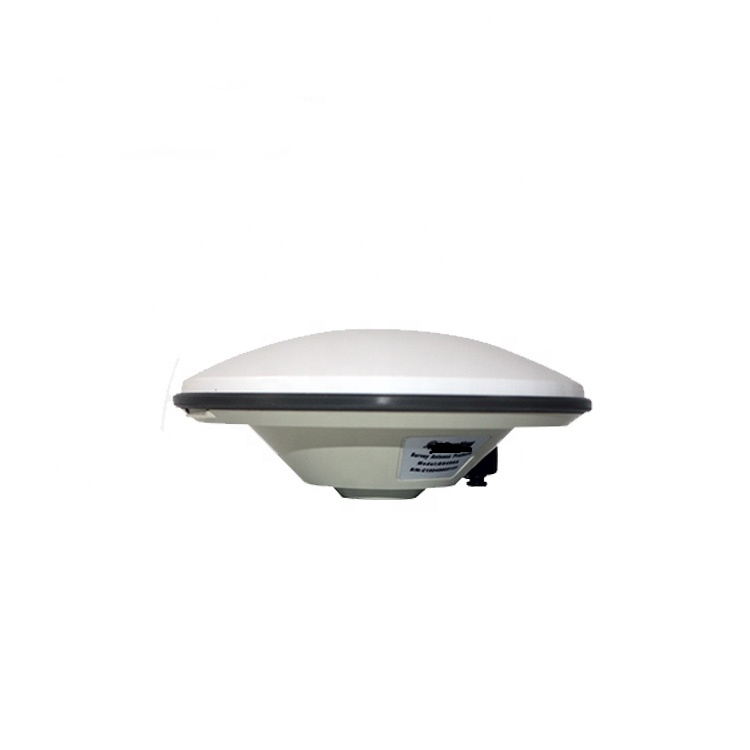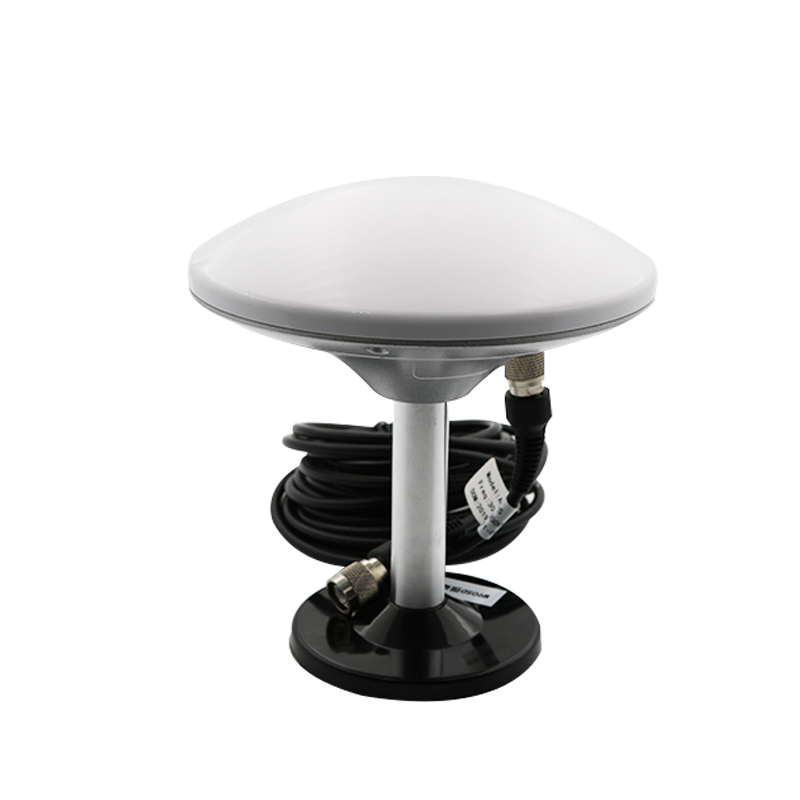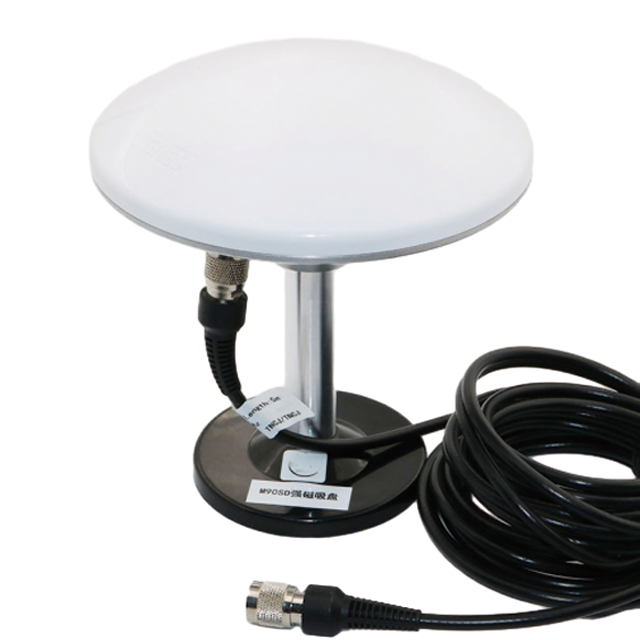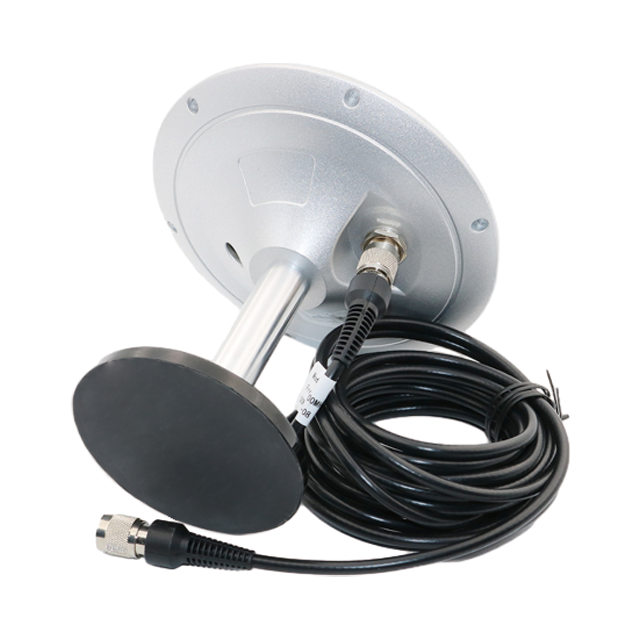5.1 Applications
5.1.1 Commercial Shipping
In the commercial shipping industry, high - gain GNSS marine antennas are essential for safe and efficient navigation. Large cargo ships rely on accurate positioning information to follow their planned routes, avoid collisions with other vessels, and enter and exit ports safely. The use of high - gain GNSS antennas allows for precise tracking of the ship's position, which is crucial for meeting tight schedules and ensuring the timely delivery of goods. In addition, these antennas are used in ship - to - shore communication systems, which rely on accurate location information for effective communication.
5.1.2 Fishing Industry
For the fishing industry, high - gain GNSS marine antennas are used for navigation to fishing grounds and for tracking the movement of fishing vessels. Fishermen need to be able to accurately locate productive fishing areas, and the use of GNSS - based navigation systems with high - gain antennas enables them to do so. These antennas also help in complying with fishing regulations, as they can be used to monitor the location of fishing vessels to ensure that they are operating within permitted areas.
5.1.3 Recreational Boating
Recreational boaters also benefit from high - gain GNSS marine antennas. These antennas are used in navigation systems on yachts, motorboats, and other recreational vessels to provide accurate positioning information. This allows boaters to navigate safely, explore new areas, and avoid dangerous areas such as shallow waters or rocks. In addition, some modern recreational boats are equipped with advanced navigation and communication systems that rely on high - gain GNSS antennas for features such as real - time weather updates and emergency distress calls.
5.1.4 Maritime Research and Surveying
In maritime research and surveying, high - gain GNSS marine antennas are used to precisely determine the position of research vessels and survey equipment. For example, in oceanographic research, accurate positioning is necessary to map the seafloor, study ocean currents, and deploy scientific instruments. In coastal surveying, high - gain GNSS antennas are used to measure the coastline, identify changes in shoreline features, and support the development of coastal management plans.
5.2 Future Trends
5.2.1 Integration of New Technologies
In the future, high - gain GNSS marine antennas are likely to see increased integration with new technologies. For example, there is a growing trend towards the integration of artificial intelligence (AI) and machine learning (ML) algorithms into GNSS systems. These technologies can be used to improve the performance of the antennas by predicting and compensating for interference, optimizing the antenna's radiation pattern in real - time, and enhancing the accuracy of the positioning calculations. Another area of integration is with 5G and future - generation wireless communication technologies. This integration could enable seamless communication between the vessel's navigation system and other on - board and off - board devices, as well as provide access to real - time data services such as high - resolution maps and weather forecasts.
5.2.2 Miniaturization and Lightweight Design
As the demand for more compact and lightweight marine equipment increases, there will be a focus on developing smaller and lighter high - gain GNSS marine antennas. Miniaturization will not only make the antennas easier to install and integrate into different types of vessels but also reduce their power consumption. New materials and manufacturing techniques are likelyto drive this trend. For instance, the use of advanced composite materials, which are both lightweight and durable, can help reduce the overall weight of the antenna without compromising its performance. Additive manufacturing (3D printing) techniques also offer new possibilities for creating complex antenna structures with precise dimensions, allowing for more efficient use of materials and the production of smaller, customized antennas. These advancements in miniaturization and lightweight design will be particularly beneficial for small recreational boats and unmanned marine vehicles (UMVs), where space and weight constraints are often more severe.
5.2.3 Enhanced Anti - Jamming Capabilities
With the increasing threat of intentional jamming and spoofing in marine environments, the development of high - gain GNSS marine antennas with enhanced anti - jamming capabilities will be a key future trend. Jamming involves the transmission of strong radio signals to disrupt the reception of GNSS signals, while spoofing involves the transmission of fake GNSS signals to deceive the receiver into calculating an incorrect position. Both jamming and spoofing can have serious consequences for marine operations, including navigation errors, collisions, and the loss of valuable cargo.
To address these threats, future high - gain GNSS marine antennas will incorporate advanced anti - jamming technologies. One such technology is adaptive beamforming, which allows the antenna to dynamically adjust its radiation pattern to null out jamming signals while maintaining reception of the desired GNSS signals. Another approach is the use of spatial filtering, which leverages the multiple antenna elements in the array to distinguish between genuine GNSS signals and jamming signals based on their direction of arrival. Additionally, the integration of encryption and authentication technologies into the antenna system can help detect and reject spoofing signals, ensuring that the receiver only processes valid GNSS data.
5.2.4 Increased Focus on Energy Efficiency
As marine vessels become more focused on reducing their environmental impact and operating costs, there will be an increased emphasis on energy efficiency in all onboard systems, including high - gain GNSS marine antennas. Traditional high - gain antennas can consume a significant amount of power, especially those with multiple antenna elements and high - performance LNAs. Future designs will aim to reduce power consumption without sacrificing performance.
This can be achieved through several means. For example, the use of low - power components, such as energy - efficient LNAs and signal processing circuits, can help minimize the power requirements of the antenna. Dynamic power management systems can also be implemented, which adjust the power consumption of the antenna based on the current operating conditions. For instance, when the antenna is receiving strong signals from multiple satellites, the power supplied to the LNAs can be reduced, and when the signal strength is weak, the power can be increased to maintain optimal performance. These energy - efficient designs will not only help reduce the vessel's overall power consumption but also extend the battery life of portable or emergency navigation systems.
Conclusion
The high - gain GNSS marine antenna has established itself as an indispensable component in modern marine navigation and positioning systems. Throughout this comprehensive analysis, we have explored the various aspects of these antennas, from their fundamental overview and intricate design and construction to their underlying working principles, the advantages they offer, the challenges they face, their wide - ranging applications, and the promising future trends that will shape their development.
In terms of design and construction, the use of multiple patch antenna elements arranged in arrays, coupled with optimized ground plane designs, robust enclosures, and versatile mounting options, ensures that high - gain GNSS marine antennas can operate effectively in the harsh and dynamic marine environment. The integration of low - noise amplifiers and advanced filtering mechanisms is crucial for enhancing the reception of weak satellite signals, minimizing noise and interference, and ensuring the accurate transmission of signals to the GNSS receiver. These design features work in harmony to provide the high gain and reliable performance that are essential for marine applications.
The working principles of high - gain GNSS marine antennas, which involve signal reception, amplification, filtering, and transmission to the receiver, highlight the precision and complexity of these systems. By capturing the circularly polarized signals transmitted by GNSS satellites, amplifying them without introducing significant noise, filtering out unwanted interference, and delivering clean signals to the receiver, these antennas enable the accurate determination of a vessel's position, velocity, and time. This process is fundamental to ensuring the safety and efficiency of marine operations, as it provides mariners with the critical information they need to navigate through challenging waters, avoid collisions, and reach their destinations safely.
The advantages of high - gain GNSS marine antennas are clear. Their ability to provide high - precision positioning, even in the most challenging marine environments, sets them apart from standard GNSS antennas. The compatibility with multiple GNSS systems further enhances their reliability, as it increases the number of available satellites for signal reception and reduces the risk of signal loss. Additionally, the enhanced safety that these antennas bring to marine operations cannot be overstated. By enabling accurate navigation and providing reliable location information in emergency situations, they play a vital role in protecting the lives of mariners, the cargo they carry, and the marine environment.
However, it is important to acknowledge the challenges that high - gain GNSS marine antennas face. Interference, both intentional and unintentional, remains a significant threat to their performance. Multipath interference, caused by signal reflections, can also lead to positioning errors, despite the best efforts to mitigate it through design. The cost of these antennas, particularly those with advanced features, can be a barrier to adoption for some users, and the need for regular maintenance and calibration adds to the overall operational costs and complexity. Addressing these challenges will be crucial for the continued growth and widespread adoption of high - gain GNSS marine antennas.
The applications of high - gain GNSS marine antennas span across various sectors of the marine industry, including commercial shipping, the fishing industry, recreational boating, and maritime research and surveying. In each of these sectors, these antennas play a unique and vital role, from ensuring the timely delivery of goods in commercial shipping to supporting scientific research in oceanography. As the marine industry continues to evolve, the demand for high - gain GNSS marine antennas is expected to grow, driven by the increasing need for accurate and reliable navigation and positioning solutions.
Looking towards the future, the development of high - gain GNSS marine antennas is poised to be shaped by several key trends. The integration of artificial intelligence and machine learning algorithms will enable these antennas to adapt to changing environmental conditions, optimize their performance in real - time, and better mitigate interference. Miniaturization and lightweight design will make them more accessible for use in a wider range of vessels, including small recreational boats and unmanned marine vehicles. Enhanced anti - jamming capabilities will be essential for protecting against the growing threat of intentional interference, while increased focus on energy efficiency will align with the marine industry's efforts to reduce its environmental footprint.
In conclusion, high - gain GNSS marine antennas have revolutionized marine navigation and positioning, providing mariners with the accuracy, reliability, and safety they need to operate in the world's oceans. While there are still challenges to overcome, the future of these antennas is bright, with ongoing advancements in technology promising to further enhance their performance, expand their applications, and address the evolving needs of the marine industry. As we move forward, high - gain GNSS marine antennas will continue to play a central role in shaping the future of marine navigation, ensuring that vessels of all types can navigate safely, efficiently, and sustainably in the years to come. Whether it is enabling the global trade of goods, supporting sustainable fishing practices, facilitating recreational boating, or advancing scientific research, the impact of high - gain GNSS marine antennas on the marine industry and society as a whole is profound and will only continue to grow.




































































 Language
Language
 En
En Cn
Cn Korean
Korean

 Home >
Home > 








 18665803017 (Macro)
18665803017 (Macro)













